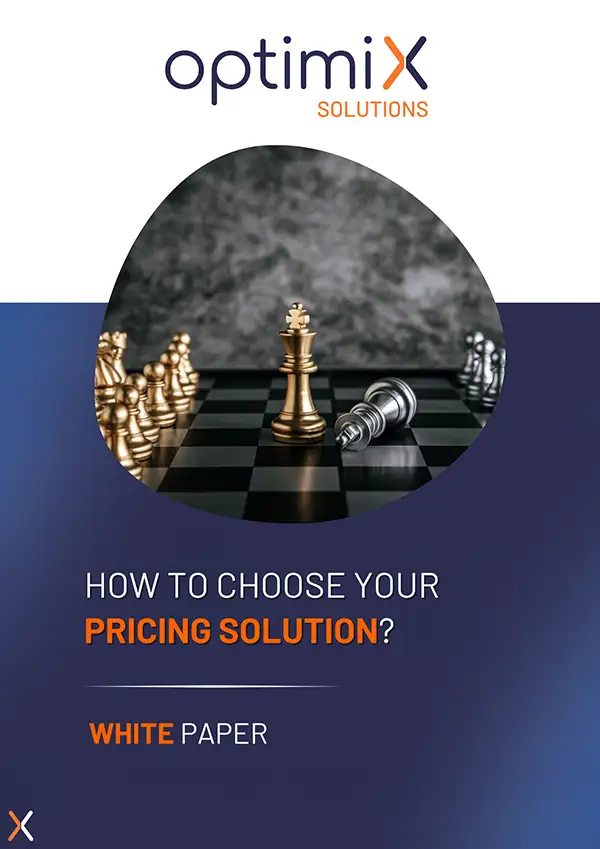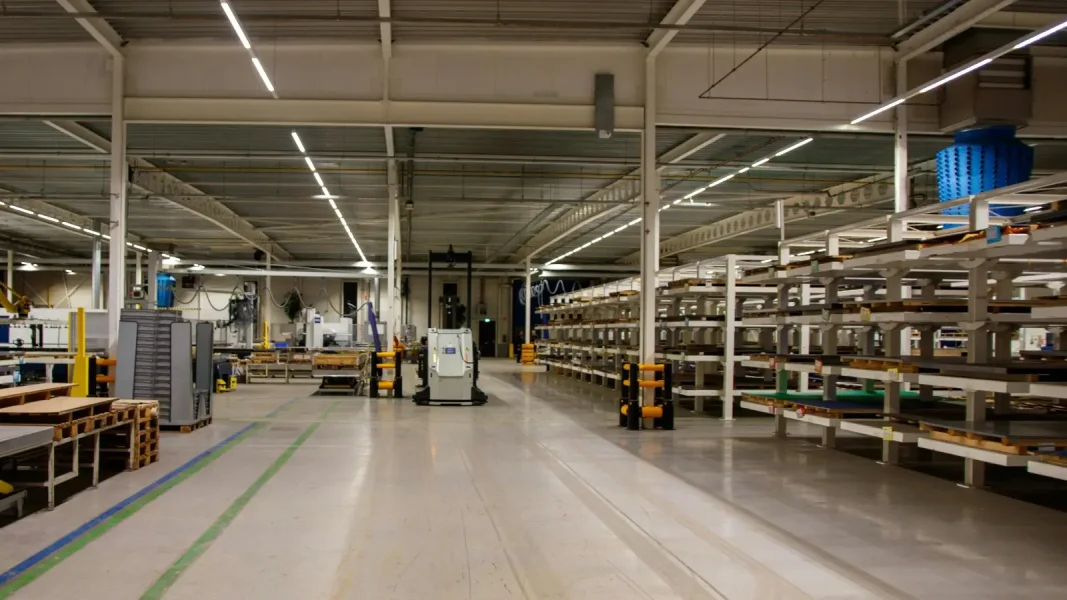Are you finding it difficult to keep up with your competitors’ pricing in today’s fast-paced retail landscape?
In a market where prices can change by the hour, staying competitive without sacrificing profit margins can be a challenge. While competitor price tracking is crucial for maintaining an edge, it’s often seen as a time-consuming and complex task. Yet, those who master it are better positioned to win customers, optimize their pricing strategy, and boost revenue.
Fortunately, with the right approach and tools, monitoring competitors’ prices can be transformed from a tedious chore into a powerful, data-driven strategy that delivers real results. By tracking competitors’ pricing strategies, retailers can respond quickly to market changes, improve margins, and ultimately boost revenue.
This article will explore how you can monitor competitor prices effectively and use data-driven strategies to improve your bottom line. We’ll also cover a step-by-step guide for tracking competitor prices and emphasize the importance of AI-powered solutions in this process.
Why Competitor Price Monitoring Matters
Competitor price monitoring is essential in the retail industry for several reasons:
- Stay Competitive: If your prices are significantly higher than your competitors, customers are more likely to turn to other retailers. Real-time price tracking ensures you can adjust prices dynamically to stay in line with the market.
- Improve Profit Margins: By understanding when your competitors are running discounts or increasing their prices, you can capitalize on opportunities to maintain or increase your margins without losing customer trust.
- Understand Market Trends: Price trends from competitors can help you predict market shifts and adjust your pricing strategy proactively.
- Boost Customer Retention: Offering competitive pricing based on market intelligence helps maintain customer loyalty. If customers know they can find reliable pricing at your store, they’re more likely to return.
- Data-Driven Decision Making: Instead of relying on intuition or manual price checks, automated systems provide real-time data, enabling precise pricing decisions.
A Step-by-Step Guide to Track Competitors’ Prices
Setting up a competitor price monitoring system doesn’t have to be overwhelming. Below is a step-by-step guide to help you get started:
Step 1: Identify Key Competitors
The first step is to identify which competitors are most relevant to your market. This could be direct competitors selling the same products or indirect competitors who offer similar items. A thorough competitor analysis will help determine which companies’ prices you should track.
Step 2: Select Products for Monitoring
Determine which products are the most important to your business and focus your efforts on monitoring these. This could include bestsellers, seasonal items, or products that offer higher profit margins.
Step 3: Choose a Price Monitoring Tool
There are several tools available to help you automate the price tracking process. These tools scrape competitor websites or online marketplaces to gather real-time pricing data. When choosing a solution, consider factors like ease of use, cost, accuracy, and scalability. The right tool should allow you to track price changes in real-time, across multiple competitors and product categories.
Step 4: Set Frequency and Parameters
Determine how often you want to track prices—daily, weekly, or in real-time. Many businesses opt for real-time tracking, which allows them to respond instantly to competitor price changes. Set up alerts for when competitors lower their prices or launch promotions.
Step 5: Analyze Data
Once you’ve gathered the pricing data, analyze it to spot trends and opportunities. Are competitors running frequent promotions on certain products? Are there pricing gaps you can exploit? By analyzing the data, you can adjust your pricing strategy accordingly.
Step 6: Adjust Prices and Test
Armed with competitor price insights, adjust your prices based on your business goals—whether it’s increasing profit margins or gaining market share. Remember to test different price points to see what resonates with your customers and adjust accordingly.
Benefits of Monitoring Your Competitors’ Prices
Monitoring your competitors’ prices isn’t just a reactive measure; it’s a proactive strategy that can lead to significant gains in both revenue and market positioning. Whether you’re a small retailer or a large-scale enterprise, understanding the competitive landscape is crucial to staying ahead. Below are the key benefits of closely tracking competitor prices:
- Stay Competitive in a Dynamic Market
In the retail world, pricing is one of the most visible aspects of your brand. Customers are constantly comparing prices, and with the rise of online shopping, it’s easier than ever for them to find alternatives. Monitoring your competitors’ prices ensures that your business remains competitive by offering similar or better prices on key products. This helps prevent losing customers to rivals with more attractive pricing strategies.
- Optimize Profit Margins
By tracking when and how competitors adjust their prices, retailers can find opportunities to maintain or increase their profit margins. For example, if competitors increase their prices during a high-demand period, you can increase yours as well without risking customer churn. Conversely, if you notice competitors offering discounts, you can determine if it’s worth matching those prices or holding firm to protect your margins.
- Enhance Pricing Strategy
Price monitoring helps you craft a smarter, more informed pricing strategy. By understanding how competitors price their products, you can implement dynamic pricing that adjusts in real-time based on market conditions, ensuring you’re neither overpriced nor undercutting yourself unnecessarily. Over time, you’ll be able to refine your strategy based on the trends and insights you’ve gathered, creating a more resilient pricing structure.
- Identify Market Opportunities
Monitoring competitors’ prices not only helps you react to their strategies but also uncovers new opportunities. For instance, if you notice a gap in the market where competitors are overpricing certain products, you can position your offerings as a more cost-effective alternative. Similarly, if you spot a product that competitors consistently discount, you may choose to focus on premium offerings or bundles that provide better value without engaging in a price war.
- Increase Customer Retention and Loyalty
Offering competitive prices based on market intelligence fosters customer trust and loyalty. When customers feel confident that your prices are fair and competitive, they’re less likely to shop around. This also improves customer satisfaction, as buyers won’t feel like they need to constantly compare prices when they know they’re already getting the best deal from you.
- Capitalize on Competitor Weaknesses
Regular price tracking can help you identify when competitors are struggling or failing to adjust quickly to market changes. For instance, if a competitor is slow to update prices during a promotional period or is consistently priced too high, you can capitalize on these weaknesses by positioning your products as the better value. This helps you win customers who may have previously been loyal to competitors.
- Adapt to Seasonal and Demand-Driven Changes
Retail is often subject to seasonality, and monitoring competitors’ prices can give you insights into how to react during peak shopping periods, holidays, or sales events like Black Friday. By keeping an eye on their pricing shifts, you can plan your promotions accordingly and avoid being caught off-guard by sudden price cuts or spikes.
- Gain a Competitive Edge with AI
Leveraging AI-powered price monitoring tools enhances your ability to stay ahead in the pricing game. AI can process large volumes of data in real-time, allowing you to react faster than competitors who rely on manual methods. It also provides predictive analytics, helping you forecast competitor pricing behavior and plan accordingly. This gives you a significant competitive edge, as you’re not only reacting but also preparing for future changes.
- Support a Data-Driven Culture
Integrating competitor price monitoring into your pricing strategy reinforces a data-driven decision-making culture within your business. Your pricing team can rely on accurate data rather than gut feeling, leading to more consistent and strategic pricing adjustments. This approach ensures your entire team is aligned and that pricing decisions are based on solid insights rather than guesswork.
The Role of AI in Competitor Price Monitoring
Artificial Intelligence (AI) is revolutionizing the way retailers track and analyze competitor prices. Here are some of the ways AI-powered solutions can enhance your pricing strategy:
1. Real-Time Data Processing
AI-driven tools allow you to monitor competitor prices in real-time. Traditional methods might require manual checks or delayed reporting, but AI solutions provide up-to-the-minute data, enabling you to make quick, informed decisions.
2. Predictive Analytics
AI doesn’t just track current prices—it can also predict future price movements. By analyzing large datasets, AI algorithms can forecast when competitors are likely to change their prices based on historical patterns, market trends, and even external factors like seasonality.
3. Automated Price Adjustments
Using AI, businesses can automatically adjust their prices based on competitor data, ensuring they remain competitive without the need for constant manual intervention. This dynamic pricing can help retailers boost revenue by staying ahead of market changes in real time.
4. Enhanced Customer Segmentation
AI can provide insights into how different customer segments respond to pricing changes. This enables more personalized pricing strategies tailored to different customer profiles, leading to better conversion rates.
5. Efficiency and Scalability
AI-powered tools can track thousands of products and competitors simultaneously, making them highly scalable. They can also handle complex data analysis tasks faster than human teams, making your pricing strategy more efficient.
Choosing the Right AI-Powered Price Monitoring Solution
When selecting an AI-powered solution, look for features that match your business’s unique needs:
- Scalability: Ensure the tool can grow with your business and handle a larger product portfolio as needed.
- Customizable Alerts: Choose a system that allows you to customize the types of alerts you receive, so you’re not bombarded with irrelevant information.
- Integration Capabilities: The solution should integrate with your existing e-commerce, CRM, or ERP systems for seamless data flow.
- User-Friendly Interface: Even with AI-driven complexity, the tool should be easy for your team to use and interpret.
- - - - - - - - - - - -
Monitoring competitor prices is an essential part of any retailer’s pricing strategy. By leveraging data-driven insights, businesses can make smarter pricing decisions, stay competitive, and increase revenue.
AI-powered tools add an additional layer of intelligence, allowing retailers to predict trends, automate pricing, and better understand customer behavior.
By following the step-by-step guide outlined above and investing in the right technology, your retail business can stay ahead of the competition and maximize profitability.







